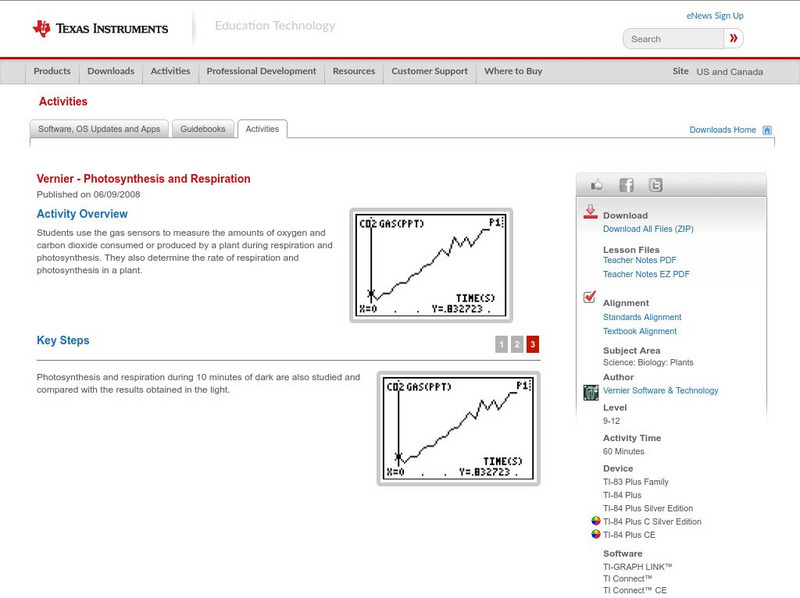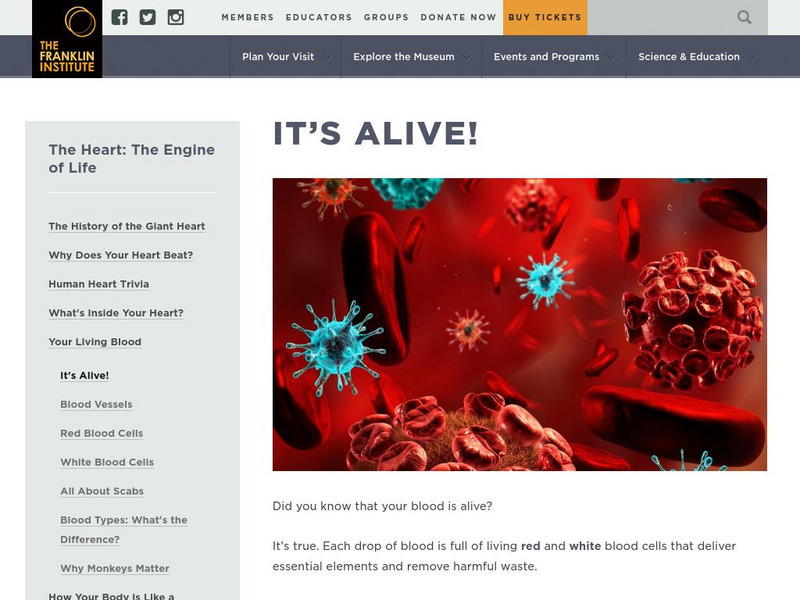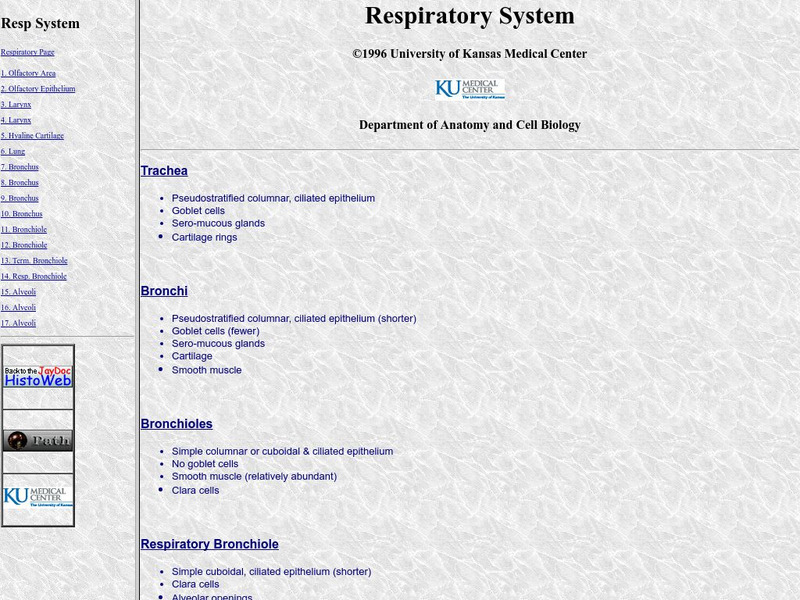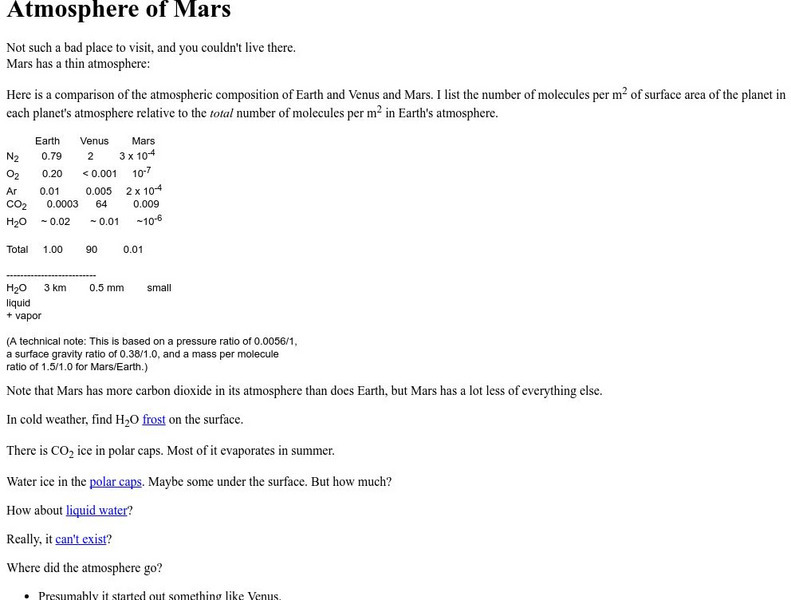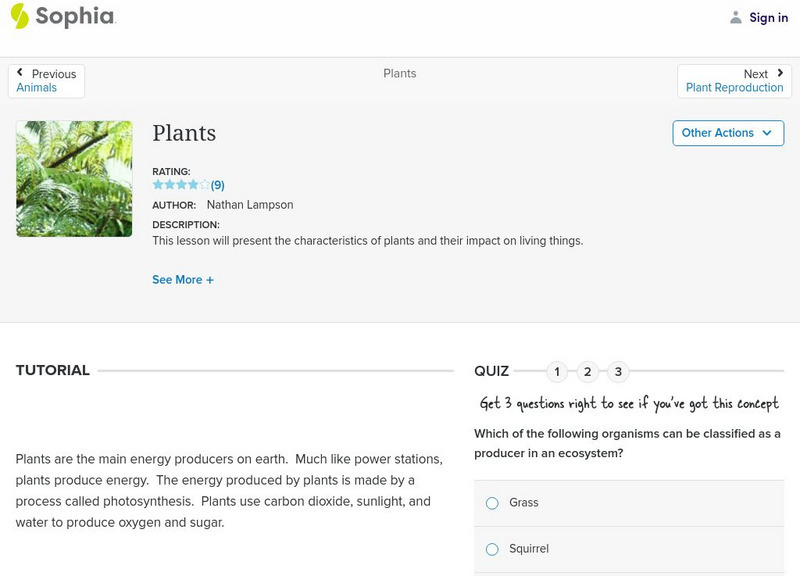Texas Instruments
Texas Instruments: Photosynthesis and Respiration
Students use the gas sensors to measure the amounts of oxygen and carbon dioxide consumed or produced by a plant during respiration and photosynthesis. They also determine the rate of respiration and photosynthesis in a plant.
Museum of Science
Museum of Science and Industry: Online Science: Activities: What Goes Around
An activity where students take on the roles of parts of the circulatory system, and simulate the transport of nutrients, oxygen, and carbon dioxide through the blood stream.
Inner Body
Innerbody: Animation of a Capillary
This site from Innerbody.com has an amazing animation of how a capillary works; there is even a detailed description to help understand the process.
Treehut
Suzy's World: Blood
Use this site to find out why your body needs blood with this quick fact sheet. You can also try an experiment with your pulse.
Environmental Education for Kids
Eek!: Activity: Trees and Air Quality
Site offers lessons and activities designed to supplement study of the environment and ecology. Concise explanations are presented on the importance of trees in our world. Also, problem solving and creative thinking is encouraged...
The Franklin Institute
Franklin Institute Online: Your Living Blood: It's Alive!
How does blood supply your body with the nourishment it needs? This site focuses on systemic circulation. Learn more about this fascinating part of your body when you check out this resource.
BiologyWise
Biology Wise: Importance of Photosynthesis
Explains what the products of photosynthesis are, how we depend on this process for the oxygen we breathe, how it maintains the balance between carbon dioxide and oxygen in the environment, and how it supports all other living organisms...
Ducksters
Ducksters: Science for Kids: Earth's Atmosphere
Kids learn about the science of the Earth's Atmosphere. Carbon dioxide, Oxygen, Nitrogen and more make up clouds and weather.
Ducksters
Ducksters: Science for Kids: Breathing and the Respiratory System
Kid's learn about the science of human breathing and the lungs. How we get oxygen into our blood and remove carbon dioxide.
Enchanted Learning
Enchanted Learning: The Earth's Atmosphere
The Earth's atmosphere is a thin layer of gases that surrounds the Earth. It composed of 78% nitrogen, 21% oxygen, 0.9% argon, 0.03% carbon dioxide, and trace amounts of other gases. This thin gaseous layer insulates the Earth from...
University of Kansas Medical Center
University of Kansas Medical Center: Respiratory System
What do you know about the respiratory system? Check out this site to learn more about this fascinating body system. This resource features slides of the different parts of this system.
University of Oregon
University of Oregon: Mars' Atmosphere
Here is a comparison of the atmospheric composition of Earth, Venus and Mars.
Enchanted Learning
Enchanted Learning: Label the Lungs
Do you know the parts of the lung? Check out this lung diagram that can be printed out for students to label the various parts.
North Central Regional Educational Laboratory
Kids Learn: Respiratory System Internet Workshop
Come and explore this internet workshop that was designed to introduce you to a study on the respiratory system. Students and teachers will benefit from this resource.
CK-12 Foundation
Ck 12: Life Science: 12.17 Cellular Respiration and Photosynthesis
Explore the two complementary processes of photosynthesis and cellular respiration.
Curated OER
Educational Technology Clearinghouse: Clip Art Etc: Joseph Priestley
an English chemist, philosopher, dissenting clergyman, and educator. He is known for his investigations of carbon dioxide and the co-discovery of oxygen.
Sophia Learning
Sophia: Plants: Lesson 5
This lesson will present the characteristics of plants and their impact on living things. It is 5 of 5 in the series titled "Plants."
Sophia Learning
Sophia: The Biosphere: Lesson 2
This lesson will discuss the importance of the biosphere (the global ecosystem) to living things. It is 2 of 3 in the series titled "The Biosphere."
Sophia Learning
Sophia: The Biosphere: Lesson 3
This lesson will discuss the importance of the biosphere (the global ecosystem) to living things. It is 3 of 3 in the series titled "The Biosphere."
Sophia Learning
Sophia: The Biosphere: Lesson 1
This lesson will discuss the importance of the biosphere (the global ecosystem) to living things. It is 1 of 3 in the series titled "The Biosphere."
Sophia Learning
Sophia: Animals: Human Respiratory System: Lesson 4
This lesson provides an overview that explains the respiratory system in humans. It is 4 of 5 in the series titled "Animals: Human Respiratory System."
Sophia Learning
Sophia: Animals: Human Respiratory System: Lesson 5
This lesson provides an overview that explains the respiratory system in humans. It is 5 of 5 in the series titled "Animals: Human Respiratory System."
Sophia Learning
Sophia: Animals: Human Respiratory System: Lesson 3
This lesson provides an overview that explains the respiratory system in humans. It is 3 of 5 in the series titled "Animals: Human Respiratory System."
Science4Fun
Science4 Fun: Photosynthesis
What is photosynthesis? Discover how plants absorb ingredients, the phases of the process, and the importance.
Other popular searches
- Carbon Dioxide Oxygen Cycle
- Oxygen, Carbon Dioxide Cycle
- Carbon Dioxide/ Oxygen Cycle
- Oxygen Carbon Dioxide Cycle
- Oxygen Carbon Dioxide Cycle
- Oxygen Carbon Dioxide Cycle
- Air Oxygen Carbon Dioxide
- Carbon Dioxide Oxygen Cycle


